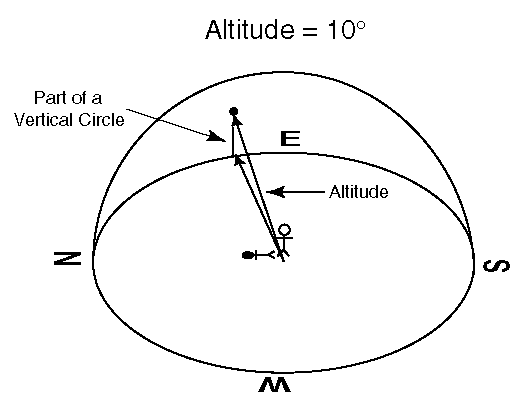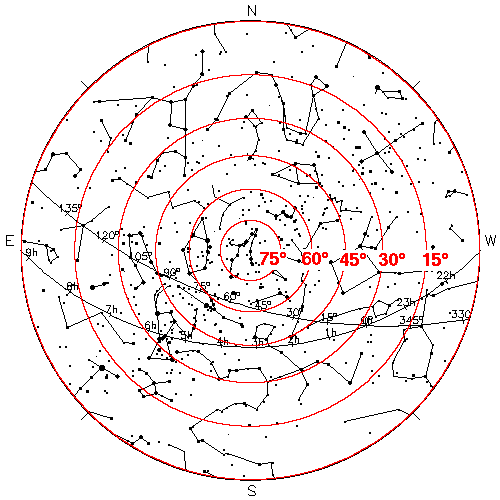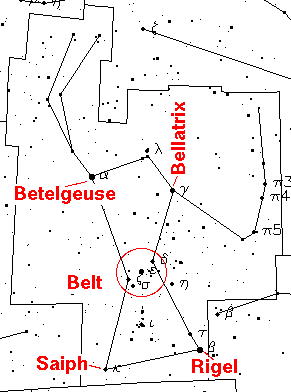

Here at CSB/SJU the north celestial pole sits about 45° directly above the north point on the horizon. Thus the altitude of the north celestial pole is about 45°. Altitude describes the angle between the nearest part of the horizon and a star. Zenith has an altitude of 90° above every part of the horizon. The "line" (really part of a great circle) that goes straight down from the star to the horizon, and straight up through zenith and back down to the other horizon, is called a vertical circle. Vertical circles rise perpendicular to the horizon. Technically altitude is the angle along the vertical circle between the horizon and the star.

The above displays circles of constant altitude on a sky map. Note that while the altitude circles are uniformly spaced in the sky, they are not uniformly spaced on the sky map. This is a result of the distortion caused by projection of a sphere onto a plane. In this case (stereographic projection) constellations are displayed larger when they are near the horizon.
Note that the above sky map shows Rigel with an altitude of 30°. (The below key will help you find the star Rigel in the constellation Orion on the sky map , if you haven't yet learned its location.)
